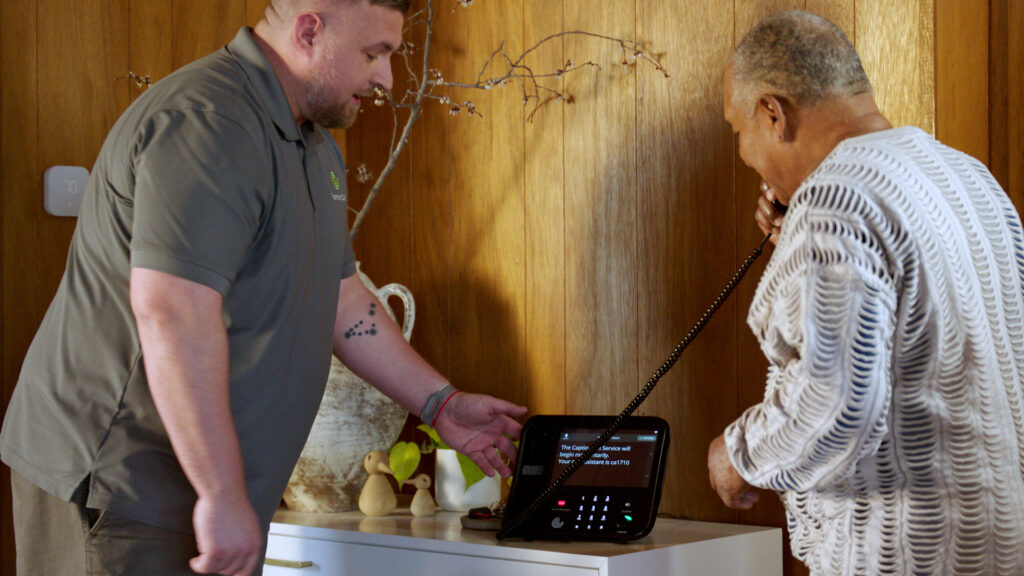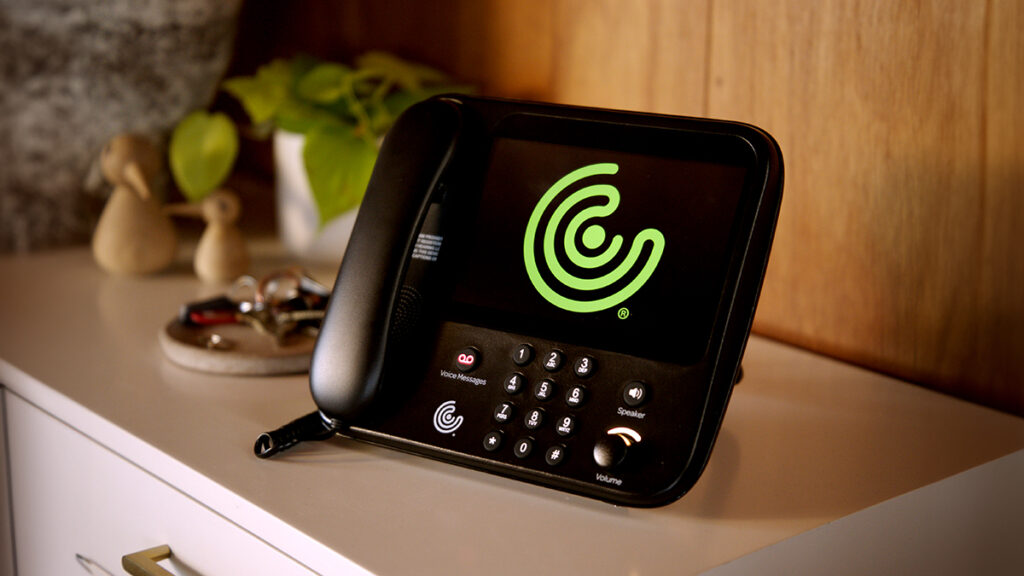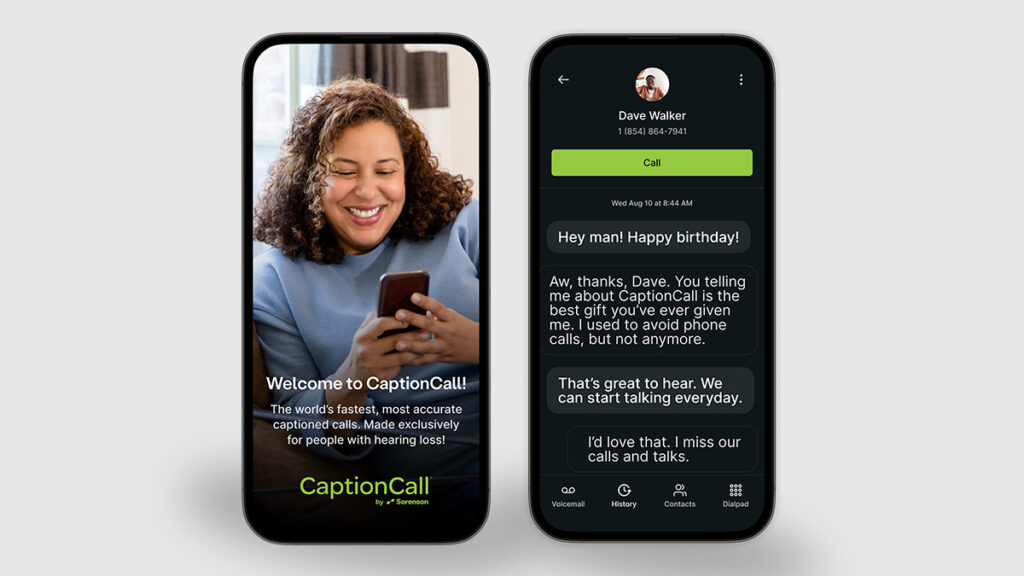Who Can Use CaptionCall? Understanding Eligibility for No-Cost Caption Phone Service

CaptionCall is a life-changing service for people with hearing loss who struggle to hear and understand their phone calls. Having captions of what people are saying as they say it means being able to talk to family and friends, handle your affairs independently, or call for help in an emergency.
One of the biggest benefits of CaptionCall is that there’s no cost to use it. That’s critical for many people who need captioned phone calls but can’t afford another bill. There’s no cost for CaptionCall because it’s federally funded as an Internet Protocol Captioned Telephone Service (IP CTS). IP CTS has rules about who’s eligible to use the service, and we’re going to explain all of that:
What is Internet Protocol Captioned Telephone Service (IP CTS)?
IP CTS is a form of telecommunications relay service (TRS) that enables an individual who can speak, but who has difficulty hearing, to use a phone. When you use caption phone service, a trained captioning agent or speech recognition technology connects to the call audio and transcribes the conversation just for you.
What is the difference between IP relay and IP CTS?
Captioned phone service, like CaptionCall and CaptionCall Mobile, isn’t the only form of telecommunications relay service.
- With IP CTS, the user receives captions of their phone conversation as they and the other party speak to each other. It’s a good option for people who are hard-of-hearing or deaf, but comfortable voicing what they want to say.
- In the case of IP Relay, the user types what they want to say and the service provider reads the statement to the hearing person on the other end of the line, then sends that person’s reply back to the user as a caption. It’s for deaf, deafblind, and hard-of-hearing people who do not speak and either do not use sign language (or use tactile signing) or simply prefer text-based communication.
The federal government covers the cost of these services to provide equal access to communication by phone for people who are hard-of-hearing, Deaf, or DeafBlind. The funding comes from fees for telecommunications providers — which they often pass on to their customers; you might have noticed the small charge on your itemized phone bills — and goes into the TRS Fund, which the Federal Communications Commission (FCC) manages.
How Do You Qualify for Caption Phone Service?
Because IP CTS uses federal funds, only people who qualify can use the service. To qualify, you must have hearing loss that makes captions necessary to use the phone effectively. That’s not our rule; it’s an FCC requirement, and that’s why captioned telephone service providers all must display a disclaimer about IP CTS eligibility.
Why do caption phone service providers warn about a federal offense?
When you sign up for IP CTS — or just research it — you’ll see this as part of the fine print:
FEDERAL LAW PROHIBITS ANYONE BUT REGISTERED USERS WITH HEARING LOSS FROM USING INTERNET PROTOCOL (IP) CAPTIONED TELEPHONES WITH THE CAPTIONS TURNED ON.
All caps is a little aggressive, we know, but it’s just to get your attention and make sure everyone understands only people who need IP CTS are allowed to use it.
Misuse of caption phone service amounts to stealing from the federal TRS Fund that allows people who need it to get the service at no cost.
Ask yourself three questions to determine whether you qualify for IP CTS:
- Do you have hearing loss?
- When talking on the phone, does your hearing loss make it difficult or impossible to understand what the other person is saying?
- Would having captions of your phone calls allow you to use the phone as well as someone without hearing loss?
If you answered yes to all three questions, you’re probably a great candidate for CaptionCall.
How to Know for Sure if You Qualify for CaptionCall
So you think you qualify for CaptionCall, but you want reassurance. Or the mere mention of federal law (in all caps) makes you nervous. Understandable.
If you want guidance about whether your hearing loss warrants phone call captioning, you can make an appointment with a hearing health provider. That’s actually how many people find out about caption phone service; more than 17,000 hearing health professionals in the U.S. refer their patients to use CaptionCall.
If you’re a hearing health professional and think some of your patients would benefit from CaptionCall, you’re right, and you can sign up to connect eligible patients with CaptionCall:
Become a CaptionCall provider »
If your hearing test shows you have hearing loss, in addition to phone call captioning, your provider may also recommend you try hearing aids, which could improve your ability to hear on and off the phone.
CaptionCall with Hearing Aids
Good news: if you get hearing aids (or upgrade old hearing aids to an option with Bluetooth technology), you can pair them to your CaptionCall phone or CaptionCall Mobile app and get the audio from your calls directly through your hearing aids.
CaptionCall phones also have TIA-1083 Certification, which means they don’t interfere with hearing aids, so you won’t hear as much static or buzzing as you would on a traditional phone.
What Do You Need to Use CaptionCall
We’ve covered the main thing you need to use CaptionCall: hearing loss that makes captions necessary on the phone. Once you’ve determined you’re eligible for IP CTS, there are a couple things you need to use the service, depending on whether you want captioning for calls on a landline phone or a mobile phone.

For CaptionCall at home or work:
- You need a special phone with a screen to display your captions. In addition to caption phone service being no-cost, CaptionCall also provides the phone at no cost (along with delivery, setup, and training to use it).
- You need either landline phone service, high-speed internet, or a smartphone with data service. If you have at least one of these, our team can connect you with CaptionCall at home or work.
You can read more here about caption phone service without internet: Captioned Telephone Without Internet »
Click here to request CaptionCall for home or work »

For CaptionCall on the go:
- You need a smartphone or tablet with data service. That’s it. CaptionCall Mobile works on both Android and iOS.
Click here to download CaptionCall Mobile from your app store »
Have questions about CaptionCall or CaptionCall Mobile? Review our FAQs

